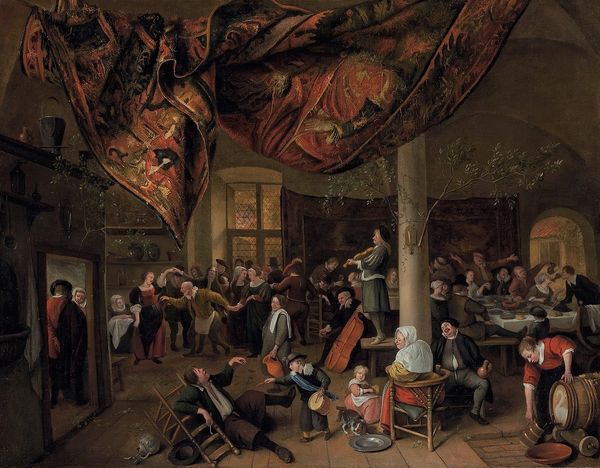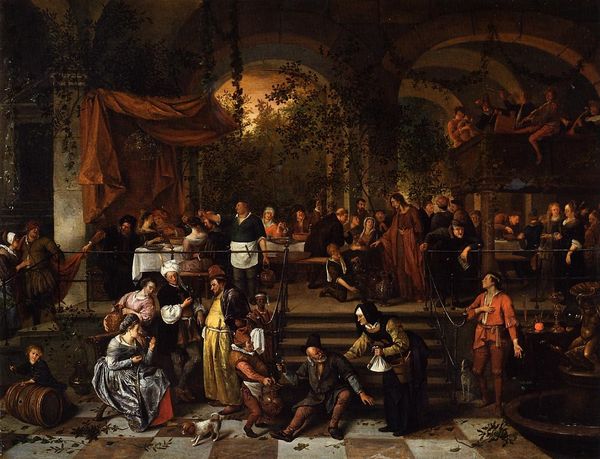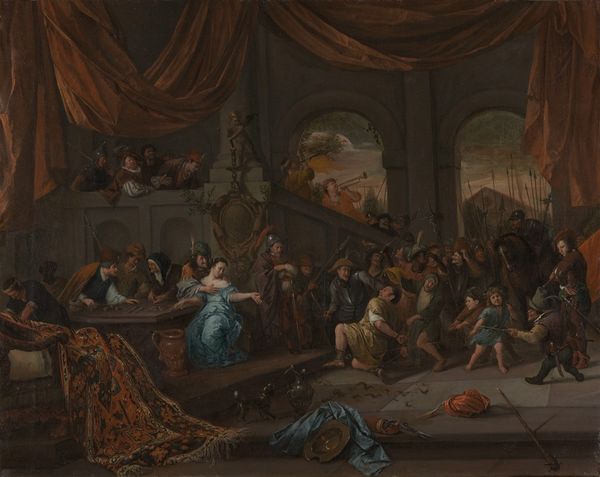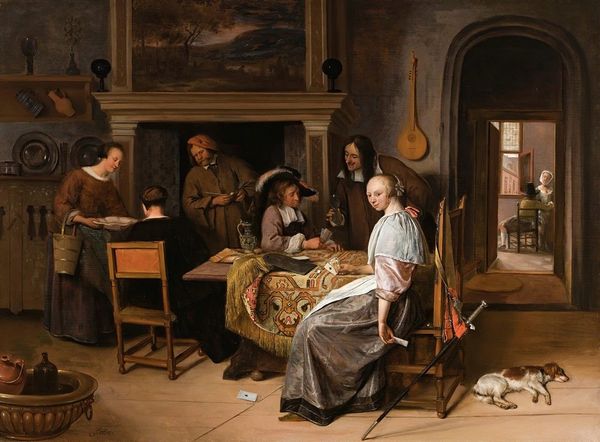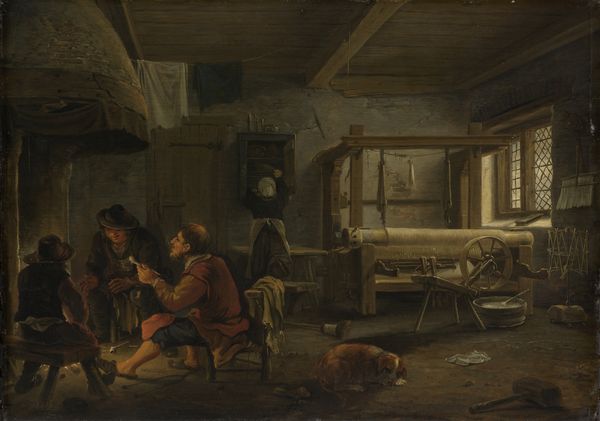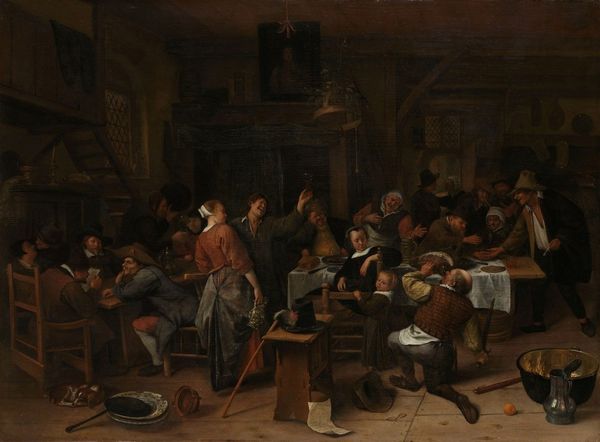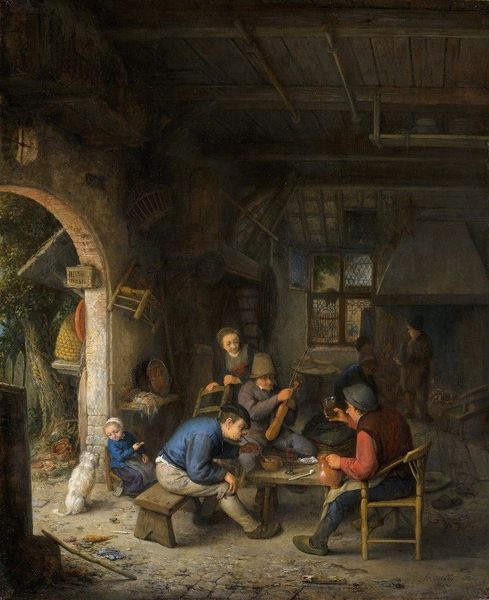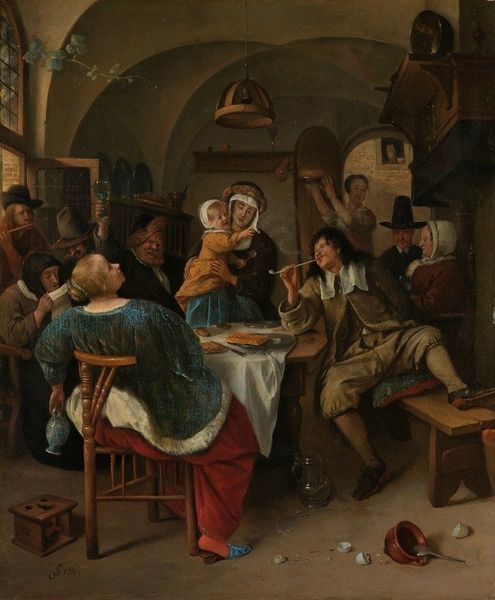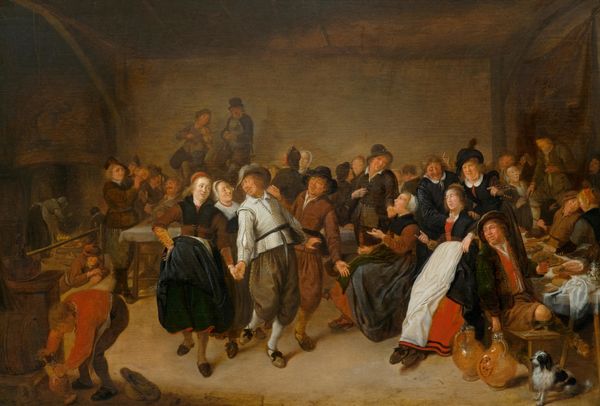
painting, oil-paint
#
figurative
#
narrative-art
#
baroque
#
dutch-golden-age
#
painting
#
oil-paint
#
figuration
#
oil painting
#
genre-painting
Copyright: Public Domain: Artvee
Jan Steen's "The Life of Man," captures a chaotic domestic scene, dominated by symbols of mortality and indulgence. Prominently, we see a draped cloth hanging above, a theatrical representation of death’s presence that would have been very familiar to people at the time. This motif echoes through art history, appearing in vanitas paintings as draped fabrics obscuring worldly pleasures. Here, it overshadows a scene of revelry, where music, food, and drink abound. The presence of children among the adults underscores the cycle of life and death, a common trope in art depicting family life. We see a little girl standing close to her grandmother who is resting in a chair. The skull emerging in the painting alludes to the ephemeral nature of earthly pursuits, a reminder of our inevitable fate. This symbol transcends time, appearing across cultures to provoke reflection on life’s brevity. In this Dutch interior, the skull, like the draped cloth, serves as a 'memento mori', subtly guiding viewers to ponder the transient nature of human existence.
Comments
No comments
Be the first to comment and join the conversation on the ultimate creative platform.
